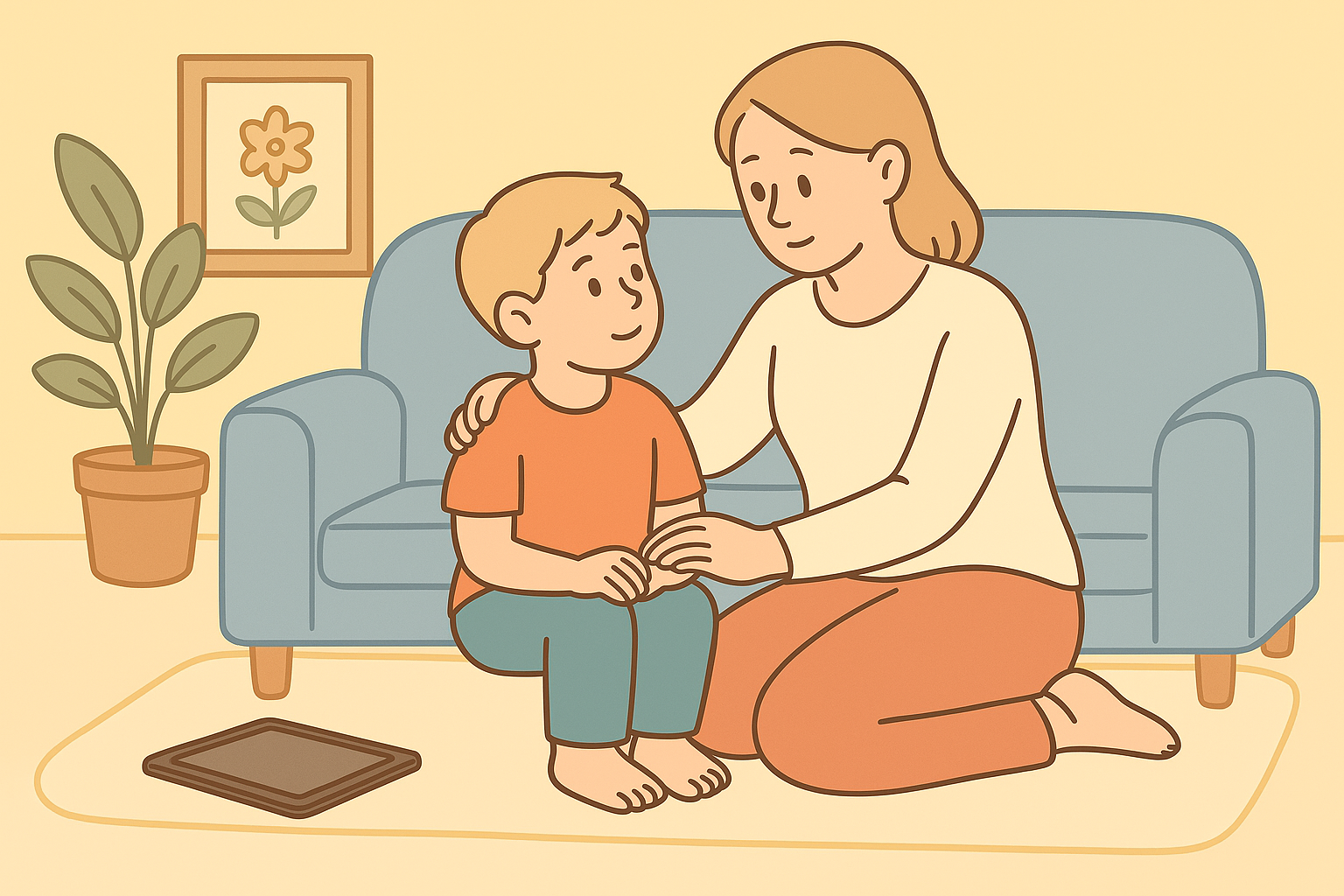The Emotional Side of Tech: Teaching Self-Regulation with Devices
The Emotional Side of Tech: Teaching Self-Regulation with Devices
Screens can connect, comfort, and educate — but they can also overwhelm. Every notification, game reward, or endless scroll lights up a child’s brain with instant gratification. And when those rewards stop? Big emotions often follow.
The good news: you can teach your child to regulate, not react. Self-regulation with technology isn’t about restriction — it’s about emotional awareness and balance.
Why Tech Triggers Big Feelings
The brain’s reward system releases dopamine during stimulating activities — especially digital ones. Games, videos, and apps are built to keep that reward loop spinning.
So when screen time ends, kids may feel frustrated, bored, or even sad — not because they’re “addicted,” but because their brains are adjusting to the shift.
💡 Fuzzigram tip: Treat screen transitions like emotional transitions — not just schedule changes.
Step 1: Label the Feelings, Not the Behavior
When kids lash out after being told to turn off a screen, they’re expressing discomfort, not defiance. Instead of “Stop whining,” try:
“It looks like it’s hard to stop when you’re having fun. I get that.”
Labeling emotions builds awareness — the first step to regulation.
See Mindful Family Moments: Bringing Calm into Everyday Chaos.
Step 2: Model Digital Calm
If kids see you respond to texts, notifications, or social media with urgency, they’ll mirror that. Show them what it looks like to pause.
“I’ll check that message later — right now, I’m finishing our puzzle.”
When parents regulate their own screen habits, kids internalize that calm.
See Digital Role Modeling: How Your Own Habits Shape Theirs.
Step 3: Create Emotional “Tech Check-Ins”
Before or after screen use, ask:
“How do you feel right now — calm, excited, or tired?”
“Do you think this game makes your body feel relaxed or buzzy?”
This turns device time into self-awareness practice.
💡 Fuzzigram tip: Reflection builds metacognition — the ability to think about thinking.
Step 4: Make Space for Recovery
After screen time, give kids a chance to settle their sensory systems.
Try:
Outdoor time or movement
Drawing or free play
Slow breathing or snuggling with a pet
Listening to calm music
See Replacing Background TV with Intentional Family Soundscapes.
Step 5: Teach the “Pause Button” Skill
When a child feels overwhelmed by tech (or by losing access to it), teach them to press their own pause button.
It could be:
Taking a deep breath
Saying, “I need a break”
Walking away for a minute
Asking for a hug
💬 Fuzzigram tip: Self-regulation tools work best when practiced before kids are upset.
Step 6: Create a “Feelings-First” Rule
Instead of reacting to tantrums or tech tension, lead with empathy:
“You’re upset because the game ended — I get it. Let’s take a breath and figure out what might help next.”
This builds emotional literacy — not just compliance.
Step 7: Turn Screen Limits Into Learning
When screens are used mindfully, they can become tools for emotional education.
Try:
Meditation or breathing apps for kids
Music-making or art programs
Story-based games that explore emotions or teamwork
💡 Fuzzigram tip: It’s not just about how much screen time — it’s about how it makes them feel.
Teaching self-regulation with devices isn’t about perfection — it’s about presence. When you help your child pause, name, and navigate their feelings, you’re building lifelong emotional intelligence — both online and off.
Because the goal isn’t to control technology — it’s to feel in control of ourselves.
This content is for educational purposes and is not a substitute for professional medical or psychological advice.
Popular Parenting Articles


